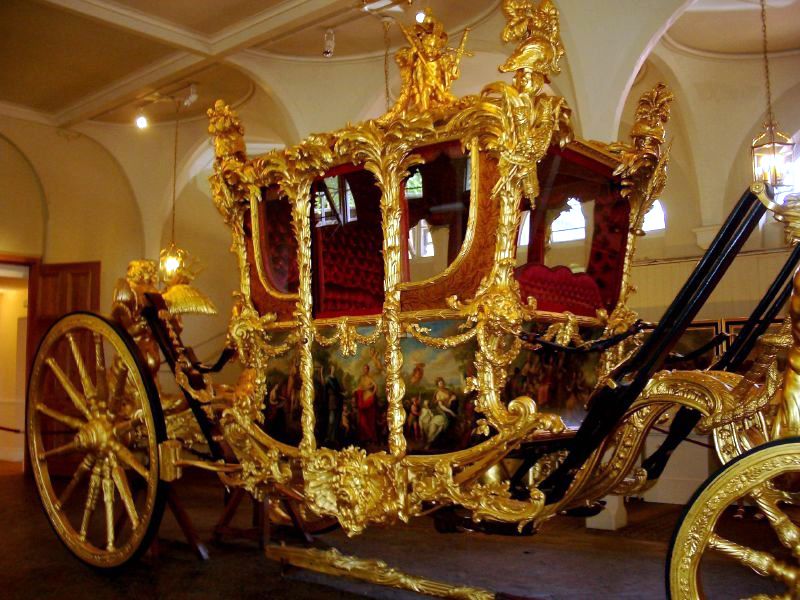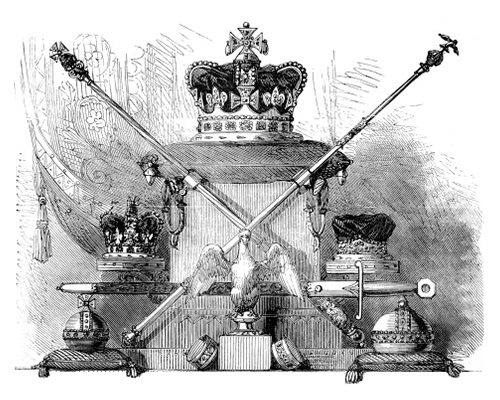by Scott Mehl © Unofficial Royalty 2017
King Frederik X of Denmark, then Crown Prince of Denmark, and Mary Donaldson were married on May 14, 2004, at Copenhagen Cathedral (The Church of Our Lady) in Copenhagen, Denmark.
- YouTube: Danish Royal Wedding of Prince Frederik and Mary Donaldson (Australian Television Coverage)
Crown Prince Frederik
Prince Frederik André Henrik Christian of Denmark was born in Copenhagen on May 26, 1968, the elder son of (then) Princess Margrethe of Denmark and Count Henri de Laborde de Monpezat. He has a younger brother, Prince Joachim. In 1972, his mother became Queen Margrethe II upon the death of her own father, King Frederik IX. At not yet 4 years of age, Frederik became The Crown Prince of Denmark.
He received his primary education in Denmark and France before earning a degree in Political Science from the University of Aarhus. He spent a few years as First Secretary to the Danish Embassy in Paris and has served in all branches of the Danish Armed Forces.
For more information about Frederik see:
Mary Donaldson

photo: Wikipedia
Mary Elizabeth Donaldson was born in Hobart, Tasmania Australia on February 5, 1972, the youngest child of Professor John Donaldson and Henrietta Horne. She has two older sisters, Jane and Patricia, and an older brother John. Her mother passed away in 1997, and her father married to British novelist Susan Horwood (aka Susan Moody). Both of her parents are Scottish, but they lived in Australia from the time of their marriage.
Mary began her education in Houston, Texas, where the family was living at the time. They returned to Tasmania and she continued her schooling there. Following the completion of her secondary education, she enrolled in The University of Tasmania, receiving a degree in Commerce and Law. She also received graduate certifications in Advertising and Marketing and worked in those fields in Australia and Scotland. As her relationship with Frederik became more serious, she left Australia and worked in Paris as an English tutor before moving to Denmark and working for Microsoft.
For more information about Mary see:
The Meeting
Frederik and Mary met on September 16, 2000, during the Olympic Games in Sydney. A friend of Mary’s was meeting Bruno Gómez-Acebo (a nephew of King Juan Carlos) for dinner at the Slip Inn in Sydney and invited Mary and another friend to join them. Bruno also brought a few friends, including Prince Nikolaos of Greece and his cousin Crown Prince Frederik. Quickly the two became very interested in each other. Over the next year, Frederik made many private trips to Australia to see Mary, and in 2001, she left Australia and moved first to Paris and then to Denmark.
The Engagement
The engagement of Crown Prince Frederik and Miss Mary Donaldson was formally announced on October 8, 2003, following a meeting of the Council of State, at which Queen Margrethe II had given her formal consent to the marriage. Following some official photos, a balcony appearance, and a luncheon, the newly engaged couple sat for a brief press conference and photographs with the world’s media in the Garden Hall at Fredensborg Palace. At this time, the world was able to see the wedding ring Frederik had given to Mary. In keeping with the tradition of incorporating the colors of the Danish flag, Mary’s ring features a large emerald-cut diamond flanked by two emerald-cut rubies. That evening, a gala dinner was held at Fredensborg Palace in honor of the couple, attended by both families, members of the Danish Government, and the Royal Household.
Pre-Wedding Festivities
Many events and festivities leading up to the wedding. The first was a reception held on April 20 at the Australian Embassy in honor of the bride and groom.
May 05 – Military Parade at Langelinie
May 07 – Rock’n’Royal in Parken (concert held in Parken Stadium)
May 08 – Dinner hosted by the Australian Governor-General
May 09 – Match Race – sailing regatta in the Port of Copenhagen
May 11 – Gala Dinner at Christiansborg Palace, hosted by The Queen
May 12 – Official Reception at Copenhagen Town Hall
May 12 – Private Party at a nightclub in Copenhagen for the younger guests
May 12 – concurrently, The Queen hosted a private dinner for the older guests at Amalienborg Palace
May 13 – Official Reception in the Folketinget (Parliament)
May 13 – Gala Performance at the Royal Theatre
Wedding Guests
Guests at the wedding included the bride’s and groom’s families, friends and members of the Danish government, and other royalty from around the world.
Danish Royal Family
Queen Margrethe II and Prince Consort Henrik
Prince Joachim and Princess Alexandra
Prince Nikolai
Prince Felix
Princess Benedikte and Prince Richard of Sayn-Wittgenstein-Berleburg
Prince Gustav of Sayn-Wittgenstein-Berleburg
Princess Alexandra of Sayn-Wittgenstein-Berleburg and Count Jefferson von Pfeil und Klein-Ellguth
Count Richard von Pfeil und Klein-Ellguth
Princess Elisabeth
The Bride’s Family
John Donaldson and Susan Moody, the bride’s father and stepmother
Jane and Craig Stephens, the bride’s sister and brother-in-law
Patricia and Scott Bailey, the bride’s sister and brother-in-law
John and Leanne Donaldson, the bride’s brother and sister-in-law
Peter Donaldson, the bride’s uncle
John Pugh, the bride’s uncle
Margaret Cunningham, the bride’s great-aunt
Royal Guests
Belgium
King Albert II and Queen Paola
The Duke and Duchess of Brabant
Princess Astrid and Prince Lorenz
Prince Laurent and Princess Claire
Bulgaria
Prince Kardam and Princess Miriam
Greece
King Constantine II and Queen Anne-Marie
Crown Prince Pavlos and Crown Princess Marie-Chantal
Princess Alexia and Carlos Morales
Prince Nikolaos and Miss Tatiana Blatnik
Princess Theodora
Prince Philippos
Japan
Crown Prince Naruhito
Liechtenstein
Prince Wenceslaus
Luxembourg
Grand Duke Henri and Grand Duchess Maria Theresa
Hereditary Grand Duke Guillaume
Prince Guillaume
Monaco
Hereditary Prince Albert
Princess Caroline and Prince Ernst August of Hanover
Netherlands
Queen Beatrix
The Prince of Orange and Princess Máxima
Prince Constantijn and Princess Laurentien
Norway
King Harald V and Queen Sonja
Crown Prince Haakon and Crown Princess Mette-Marit
Princess Märtha Louise and Mr. Ari Behn
Serbia
Crown Prince Alexander and Crown Princess Katherine
Spain
Queen Sofia
The Prince of Asturias and Letizia Ortiz Rocasolano
Infanta Elena, Duchess of Lugo, and Jaime de Marichalar, Duke of Lugo
Infanta Cristina, Duchess of Palma de Mallorca, and Iñaki Urdangarin, Duke of Palma de Mallorca
Sweden
King Carl XVI Gustaf and Queen Silvia
Crown Princess Victoria
Prince Carl Philip
Princess Madeleine
United Kingdom
The Earl and Countess of Wessex
Other Royalty
Empress Farah of Iran
The Prince and Princess of Naples
The Duke and Duchess of Calabria
The Duke and Duchess of Castro
Archduchess Francesca of Austria
The Duke and Duchess of Braganza
Prince Karim Aga Khan IV
Prince Georg Friedrich of Prussia
Prince Philipp of Hesse
Princess Xenia of Hohenlohe-Langenburg
Prince Wilhelm and Princess Ilona of Schaumburg-Lippe
Princess Désirée of Schaumburg-Lippe
Princess Eleonore of Schaumburg-Lippe
Prince Dimitri and Princess Dorrit Romanov
The Wedding Attendants
Bridesmaids
Jane Stephens, the bride’s sister
Patricia Bailey, the bride’s sister
Amber Petty, a friend of the bride
Best Man
Prince Joachim, the groom’s brother
Flower Girls and Page Boys
Erin Stephens, the bride’s niece
Kate Stephens, the bride’s niece
Madisson Woods, the bride’s niece
Prince Nikolai of Denmark, the groom’s nephew
Count Richard von Pfeil und Klein-Ellguth, son of the groom’s cousin
The Wedding Attire
For her wedding dress, Mary selected Danish designer Uffe Frank. The dress is made of ivory duchess satin lined with silk organza. In the skirt of the dress, the satin was set in panels that opened from the hip to reveal nearly 8 meters of antique Irish lace underneath. The sleeves were described by the designer as ‘calla sleeves’, as they opened in the shape of a calla lily. The back of the skirt was shaped with 31 meters of tulle, edged with Chantilly lace. For the ceremony, the bride’s dress also featured a detachable 6-meter train of satin.
Mary’s veil was first used in 1905 at the wedding of Princess Margaret of Connaught to the future King Gustav VI Adolf of Sweden. It came to Denmark when Margaret’s daughter married the future King Frederik IX of Denmark in 1935 and was worn by all three of Ingrid’s daughters, including the current Queen.
Holding the veil in place is a tiara given to the bride by Queen Margrethe and Prince Henrik, now typically referred to as Crown Princess Mary’s Wedding Tiara. Mary’s earrings were specifically made for the wedding. Set in platinum, they feature brilliant-cut diamonds and large South Sea pearls. In a very personal tribute to her late mother, the bride had her mother’s wedding ring sewn into the bodice of her dress, close to her heart.
The bridal bouquet consisted of several types of white flowers, including white and antique roses, stephanotis, rhododendrons, azaleas, and myrtle from Fredensborg Palace, and spirea from Graasten Palace, with a trail of snow gum, an Australian eucalyptus. Following the wedding festivities, Mary’s bouquet was taken to Scotland and laid at her mother’s grave.
Crown Prince Frederik wore the dress uniform of the Danish Navy, with the sash and star of the Order of the Elephant, and necklet and star of the Order of the Dannebrog.
The Ceremony
The wedding ceremony took place on May 14, 2004, at 4 pm at the Copenhagen Cathedral (Church of Our Lady). Following the arrival of the royal guests, the Donaldson family, Queen Margrethe and Prince Henrik, the bride made her entrance to Handel’s ‘Zadok the Priest’. Following the service, the couple proceeded by carriage through the streets of Copenhagen to Amalienborg Palace. There, they appeared on the balcony with their parents, to the cheers of the crowds gathered below. A sea of Danish and Australian flags greeted them. Following the balcony appearance, they proceeded to Fredensborg Palace by car for the wedding banquet.
The Wedding Banquet
The wedding banquet was held in a massive tent on the grounds of Fredensborg Palace. Following speeches by the Prince Consort, The Queen, Professor Donaldson, and the Crown Prince, the guests dined on a menu of predominantly French cuisine:
Timbale of Shellfish from the Nordic Seas
Sea Urchin Sauce
—
Roast Venison from the Royal Forests
Rissole Potatoes from Samsø
Peas à la Parisienne
Sauté Mushroom and Morel Sauce
—
Vol-Au-Vent Perfect Union
White Danish Asparagus and Bornholm Chicken with a Sprinkling of Apple Cider
—
White Chocolate Délice
Crown Prince and Crown Princess
—
La Cigaralle du Prince Consort 2000
Cahors Château de Caïx 1996
En Magnum
—
Champagne Mercier
Cuvée Frederik & Mary
The wedding cake was 2 meters in height and weighed nearly 90kg. It featured 10 tiers, some with almond and others with chocolate. All were covered in white marzipan with pink roses and the couple’s monogram in chocolate. In a bit of a humorous break from tradition, the cake was topped with cartoon figures of the couple.
Late in the evening, the couple and their guests moved to the Dome Hall in the palace for the traditional Bridal waltz. Tradition dictates that the dance must take place just before midnight, and although the entire banquet was running a bit behind schedule, they made it just in time. The couple took the floor, surrounded by their guests forming a large heart-shaped group around them. As the dance progressed, the guests moved in closer and closer to the couple.
This article is the intellectual property of Unofficial Royalty and is NOT TO BE COPIED, EDITED, OR POSTED IN ANY FORM ON ANOTHER WEBSITE under any circumstances. It is permissible to use a link that directs to Unofficial Royalty.
















